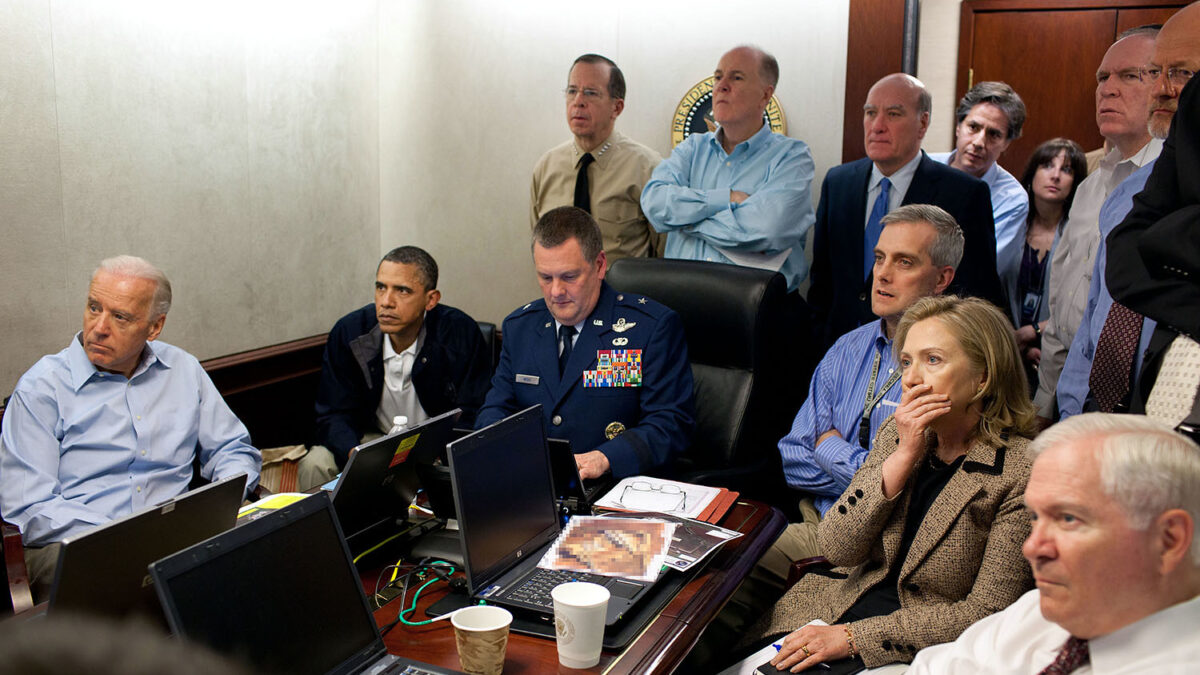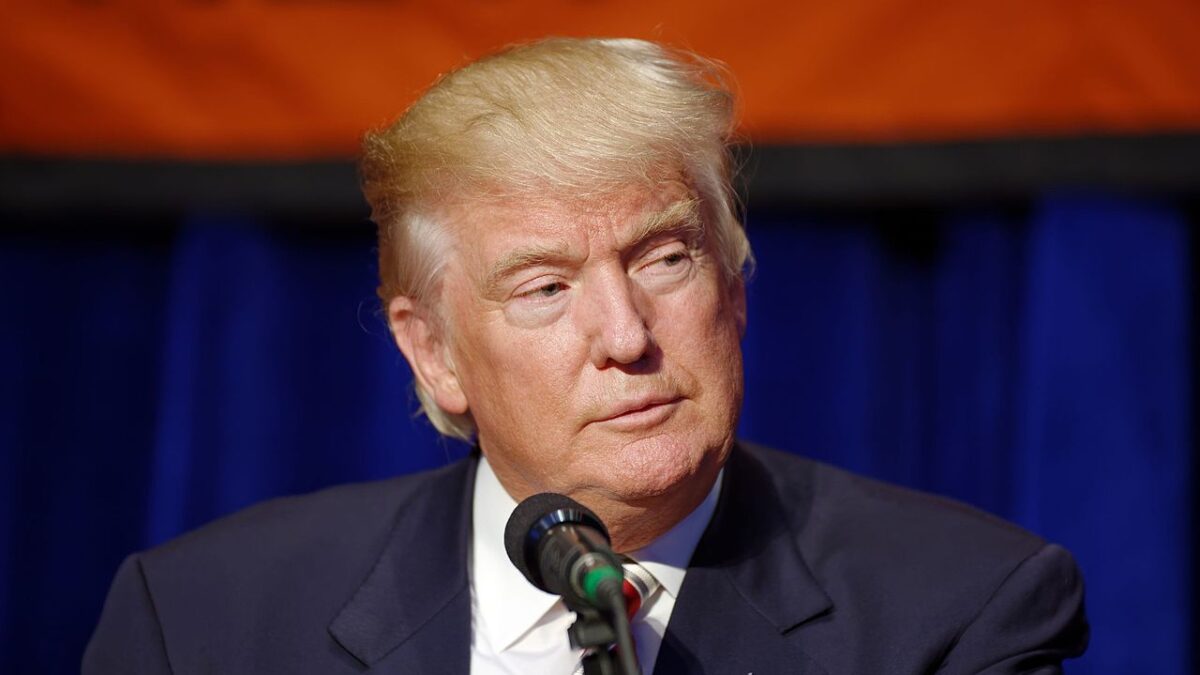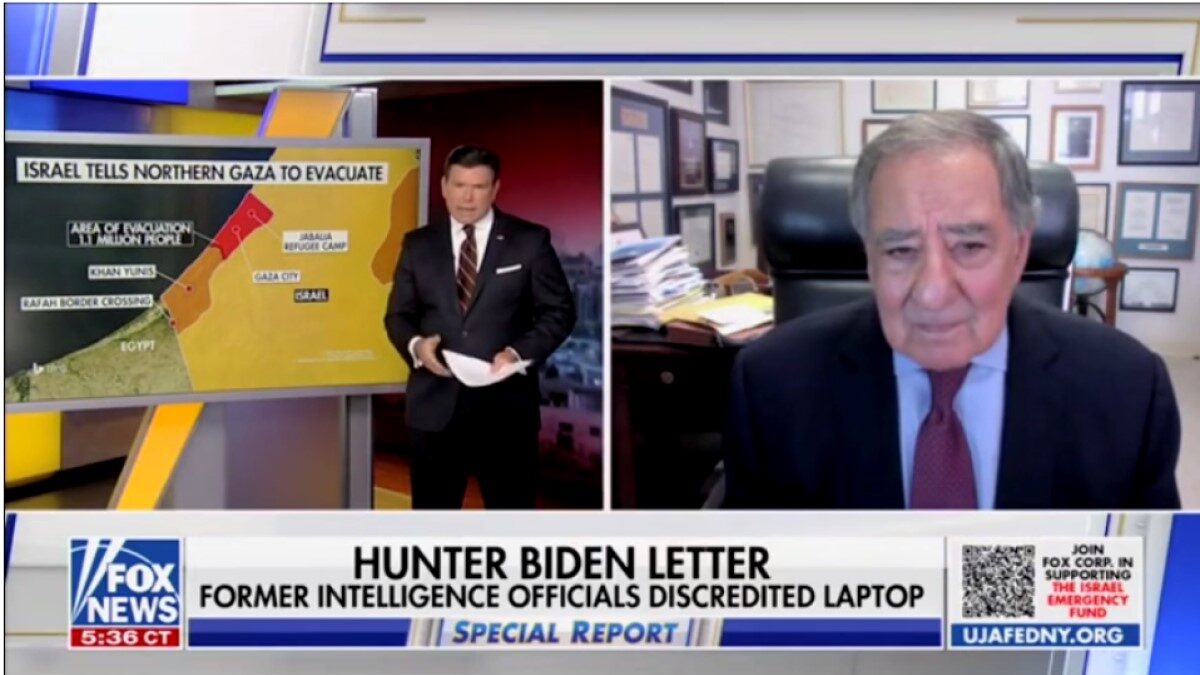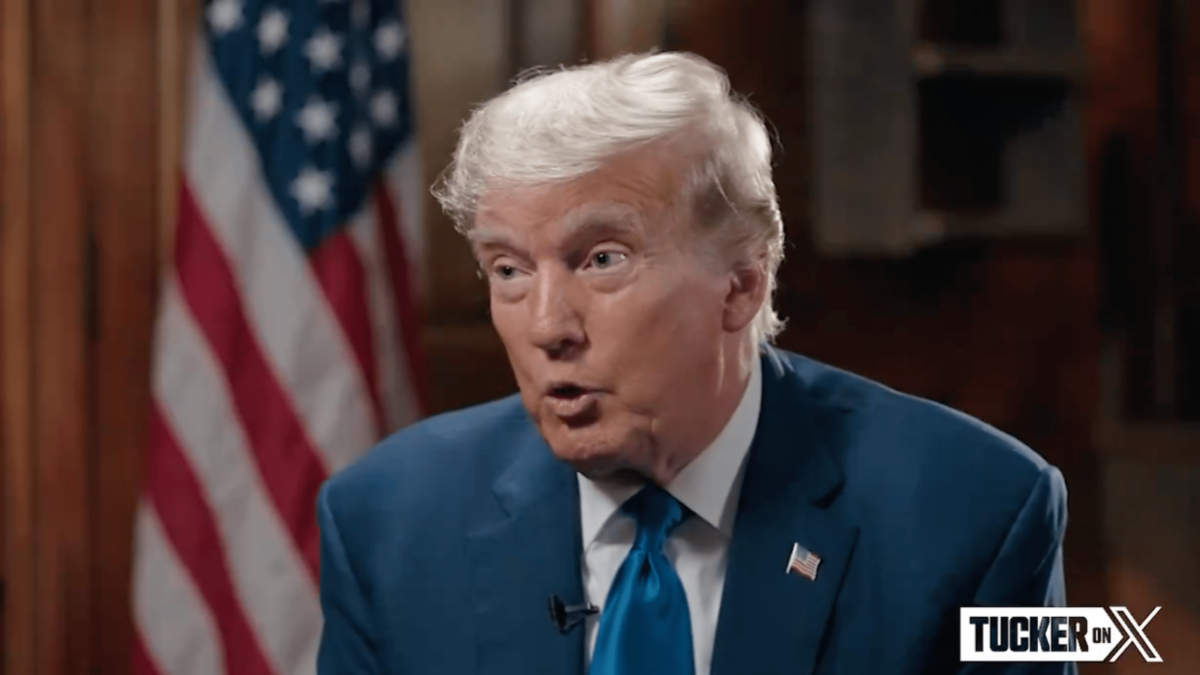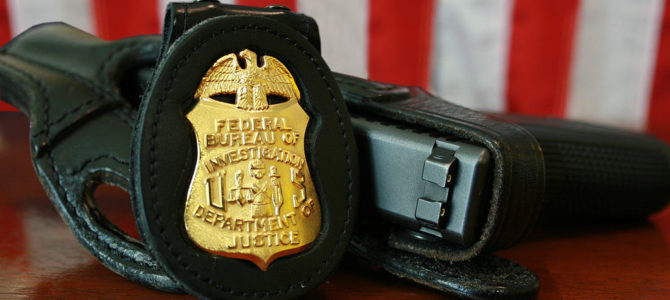
A trove of recently released documents sheds further light on the scope and logistics of the information operation designed to sabotage an American election. Players include the press, political operatives from both parties, and law enforcement and intelligence officials. Their instrument was the Steele dossier, first introduced to the American public two years ago.
A collection of reports compiled by former British spy Christopher Steele, the dossier is now engraved in contemporary U.S. history. First marketed as bedrock evidence that Donald Trump colluded with Russia to win the 2016 election, the dossier’s legitimacy took a hit after reports showed the Hillary Clinton campaign paid for the work.
The revelation that the dossier was used to secure a Foreign Intelligence Surveillance Act (FISA) warrant on Trump campaign adviser Carter Page compromised the integrity of the investigation the FBI had opened on Page and three other Trump associates by the end of July 2016. Nonetheless, that same probe continues today as the special counsel investigation.
The dossier plays a central role in Robert Mueller’s probe. In the unredacted portions of Deputy Attorney General Rod Rosenstein’s memo outlining Mueller’s scope are allegations that Trump adviser Paul Manafort colluded with Russian government officials interfering in the 2016 race. That claim is found in no other known document but the dossier. It is unclear whether further dossier allegations are in the redacted portions of the scope memo.
Further, with Mueller in charge, the dossier-won warrant on Page was renewed a third, and final, time in June 2017. It expired in September, when confidential human source Stefan Halper reportedly broke off regular communications with Page.
The Dossier Model Is Being Replicated
Paradoxically, it is the Mueller investigation that has most thoroughly tested the veracity of the dossier’s claims. After the FBI’s monitoring of Page for nearly a year, with access to his electronic communications prior to the warrant, the special counsel has brought no charges against the former Navy officer alleged in the dossier to be at the center of a criminal conspiracy.
Yet the dossier abides. Even as prominent and early collusion theory promoter journalist Michael Isikoff now questions its probity, many still contend that Steele’s reports have not been “disproven.” After nearly two years since the Steele dossier was published, it remains the cornerstone of the case for collusion. Moreover, the dossier model has given rise to similar operations, joining the press, political operatives, and intelligence officials, not all of them American, targeting Trump policies.
The reported murder of Arab intelligence operative and Washington Post contributor Jamal Khashoggi was used as a platform by Turkish intelligence, the government of Qatar, and U.S. operatives to advance a campaign through the press, with the Post playing a leading role, against the administration’s pro-Saudi policies.
Democratic officials teamed with the media to thwart Supreme Court nominee Brett Kavanaugh, also using an FBI investigation as a political tool. “We were very concerned when Democrats on the Senate Judiciary Committee pushed for another FBI investigation of Kavanaugh,” said a congressional investigator on the Republican side familiar with the dossier operation. “We didn’t know who would get it at the bureau and who we can trust over there.”
Cyber-security experts hired by the Senate Intelligence Committee to write a report on how Russian social media accounts helped Trump beat Clinton themselves created fake Russian social media accounts to dirty the GOP Senate candidate in last year’s special Alabama election. As the dossier operation targeted Trump, the bot operation created the impression that Roy Moore was supported by the Kremlin.
Pretext for Two Years of Treason Accusations
The dossier operation has not only damaged institutions like the FBI and DOJ, it has also poisoned the public sphere, perhaps irremediably. As a result, it is now accepted journalistic practice to print, and reprint, any garish fantasy so long as it’s layered with Russian intrigue and Trump team treason. Even as the rest of the country sees an institution that has made itself a laughingstock, the press continues to salute itself for its bravery—or the courage and industry required to take leaks from law enforcement and intelligence officials and Democratic operatives in an effort to topple a president it doesn’t like, elected by neighbors it holds in contempt.
How did it come to this? Former FBI director James Comey ushered in the era of the dossier when he briefed Trump on January 6, 2017 on reports that “the Russians allegedly had tapes involving him and prostitutes at the Presidential Suite at the Ritz Carlton in Moscow from about 2013.”
Last week, the Department of Justice released a heavily redacted version of the two-page memo on the dossier with which Comey briefed the president-elect. The “source’s reporting,” reads the memo, referring to Steele, “appears to have been acquired by multiple Western press organizations starting in October.”
As Comey later recorded in a separate memorandum documenting the meeting, he told Trump that “media like CNN had [the reports] and were looking for a news hook.” The briefing provided one.
According to Comey’s recent testimony, James Clapper ordered the briefing. The former director of national intelligence is believed to have then tipped off CNN, which later hired him as a commentator. After the award-winning CNN story posted, BuzzFeed published the document, passed to the news organization by Republican aide David Kramer.
The Frame Game Is Bipartisan
In his testimony, Comey again pushed the fiction that Republicans opposed to Trump first paid for the dossier. Congressional Republicans are right that Comey is trying to muddy the waters—the Clinton campaign and the Democratic National Committee funded Steele’s work.
But credit Comey for underscoring, and maybe not accidentally, a larger truth—the operation that sought to defraud the American voter had bipartisan support all along. Court documents released in December show that Steele gave his final report to Republican Rep. Adam Kinzinger and House Speaker Paul Ryan’s chief of staff, Jonathan Burks.
How is it possible that so many people knew and said nothing? Everyone knows it’s impossible to sustain a real conspiracy that size. People in the know talk and the press makes it public. But they did talk—all the time. But the conversations, implicit confessions, of FBI agents and other U.S. officials were hidden by colleagues who classified their talk, or deleted it, like FBI employees Peter Strzok and Lisa Page’s text messages.
The press didn’t report it because the press is part of the operation, the indispensable part. None of it would have been possible, and it certainly wouldn’t have lasted for two years, had the media not linked arms with spies, cops, and lawyers to relay a story first spun by Clinton operatives.
Starting with a relatively small group consisting of Steele, Fusion GPS founder Glenn Simpson, and senior FBI, DOJ, CIA, and State Department officials, the dossier operation gained momentum and adherents, senior officials across the political spectrum, a large part of the press corps, then the many millions of Americans it wound into a frenzied madness. Thus, much of the dossier operation was improvised.
But the core component appears to be the result of a carefully constructed plan requiring technical and legal know-how. Interviews with current and former U.S. officials provide fresh insight into how Clinton-funded operatives and senior law enforcement figures orchestrated a media campaign and weaponized the dossier to obtain the October 21, 2016 warrant on Page.
Fishing for a FISA Warrant
The claim from the recently released two-page Comey memo that Steele’s “reporting appears to have been acquired by multiple Western press organizations starting in October” is inaccurate. The allegations that were eventually rolled into the Steele dossier first started appearing in the press six months previously. Understanding how the company that produced the dossier operates may clarify matters.
Fusion GPS calls the two- to three-page handouts that it distributes to its media customers dossiers. The so-called Steele dossier is a collection of 17 Fusion GPS dossiers apparently written over the period of several months in 2016 and published by BuzzFeed in January 2017.
Fusion GPS started briefing the press on dossiers of Trump-Russia material long before BuzzFeed made the aggregate document public. An echo chamber of Trump-Russia stories (New York Magazine, Slate, and two in Politico) that appeared in April shows Fusion GPS was coordinating with the media shortly after it was hired by the Clinton campaign in March.
There is also confusion concerning the dossier’s sources. The Comey memo contends that Steele “collects information from a layered network of identified and unidentified subsources.” Presumably some genuine human sources fed the reporting. The dossier, however, was produced not by an intelligence bureaucracy, but by an opposition research firm whose “research,” according to Simpson’s Senate testimony, “is very document focused.”
The handouts Fusion GPS distributes to journalists are typically sourced to news articles, with footnotes and links, often from foreign or lesser-known media outlets. As another Fusion GPS contractor working on the Trump-Russia project explained, the job was to “produce memos based on information that is in the public record that can be given to the feds or shared with journalists.”
The Making of a Memo
Many of the dossier’s sources are taken from media reports or other documents, without the customary footnotes and links. For instance, it appears that the most notorious Steele memo recycled earlier Trump-Russia reports.
Around the same time Fusion GPS was hired, longtime Clinton foot-soldier Cody Shearer was also probing for ties between Trump and Russia. He, too, was speaking to media figures, like former CIA official Robert Baer. Shearer wrote two reports (“Donald Trump—Background Notes—The Compromised Candidate,” and “FSB Interview”), which are likely sources for the dossier report on which Comey briefed Trump.
Both Shearer memos detail Trump’s alleged sexual proclivities. One claims there is film of a woman urinating on him. The other Shearer report alleges that there is video of Trump caught in a sexual tryst in the presidential suite of the Moscow Ritz-Carlton in 2013. According to Shearer’s FSB source, this is how the Russians compromised Trump.
These are nearly identical to the core findings that Steele seems to have shared with the State Department and FBI in June and early July. The chronology of the BuzzFeed document indicates no other memos existed at that point. It’s not known whether Steele shared reporting with U.S. authorities that was not included in the BuzzFeed version.
Seeding the Media with Collusion Claims
DOJ officials claim that Steele’s reports regarding the Republican candidate’s alleged relationship to an adversarial foreign power were shelved for several months. However, action on the media front in early summer shows this is unlikely.
Shortly after Steele met with an FBI agent in London the first week of July, the press was briefed on his subsequent reporting. On July 26, a Wall Street Journal reporter texted Carter Page to ask for comment on allegations that he had met with Igor Sechin, a Russian energy executive and Putin ally, to discuss “energy deals and the possibility of the U.S. government lifting sanctions.”
The reporter’s queries match allegations made in a July 19 Steele memo that Page met with Sechin, who was sanctioned by the United States in 2014, during a Moscow trip earlier that month to discuss “future bilateral energy cooperation and prospects for an associated move to lift Ukraine-related Western sanctions on Russia.” These claims were entered in the original FISA application and all three renewals.
The FBI terminated its arrangement with Steele after discovering that he had briefed the press for a Mother Jones article published October 31. The House Intelligence Committee’s FISA memo argued that
Steele should have been fired for his “undisclosed contacts” with press outlets in September, before the FISA application was submitted to the court. But the exchange between Page and the WSJ reporter shows the press was being briefed on what is said to be Steele’s reporting by the end of July. Page wrote on Twitter recently that Fusion GPS fed the journalist this material.
Page has denied that he knows Sechin, the president of Rosneft (Russia’s major petroleum company), or the Kremlin official named in the memo. He responded to the Journal reporter that the “sanctions lifting point” was “ridiculous.”
The Advantages of Targeting a Normal Person
The former Trump volunteer brecently filed a defamation lawsuit against the Democratic National Committee and the law firm, Perkins Coie, that hired Fusion GPS on Clinton and the DNC’s behalf. “Until then, I was an unknown name,” Page told The Federalist in a recent phone call. “The advantage of smearing a private figure is that you can make up whatever lies you want. If you’re sketching someone on a blank slate, then it’s easy to draw a fictional characterization.”
According to intelligence officials, the fact that Page was relatively unknown made him an attractive target.
“It can be tougher to make a FISA case on a prominent, government-connected figure,” said former Army intelligence officer Chris Farrell, now director of investigations at Judicial Watch. “But you can spin a tale about a guy who is on the margins. You can make sweeping generalizations, you don’t have to be too detailed. And they’d use the lack of information on Page to explain that’s precisely why they need the warrant—to learn more about him.”
Intelligence sources told The Federalist that Page was likely targeted as a means of accessing the Trump team’s communications.
“It’s not just that it would be hard to convince a judge to let you target Trump,” said a former senior U.S. intelligence official who spoke on condition of anonymity. “There’s an upside to going after a middle or lower-level figure in an organizational structure.”
According to FISA’s two-jump protocol, the FBI can monitor the communications of those in contact with the target and those in contact with them. Law enforcement would look for a target likely to provide the largest aperture into an organization.
“The fact that Page was a peripheral campaign figure meant he was in contact with more people than someone like Trump, whose contacts were likely pretty limited,” said the same source. “Trump’s the top guy, so his contacts within the team are through a funnel, a handful of aides. Targeting Page would give them broader ability to hop. His first order contacts within the campaign team were probably limited, maybe 15 people—who knows? But that would give lots of access to other people on the second hop, maybe 30 or 40 times that.”
Page is the dossier’s protagonist. It is the dossier’s account of his actions that earned the October 21 warrant. A former prosecutor familiar with the case told The Federalist that when he first read the dossier, he recognized immediately that Page was the central figure: “All the other stuff isn’t that important. The other characters appear to be secondary. Page is the leading actor, the centerpiece of the dossier. He’s the one who is alleged to have committed a crime.”
Crossing the Criminal Accusation Threshold
To get a FISA warrant on American citizen, there must be probable cause to believe that the subject has or may be about to commit a crime.
Retired FBI agent Mark Wauck enumerated what is required to get a FISA warrant on a U.S. person. “He must be acting as an agent of a foreign power,” Wauck told The Federalist. “He must be engaged in clandestine intelligence activity, and the clandestine intelligence activity involves or may involve a violation of a criminal statute. No crime alleged, no FISA warrant,”
Title I of the 1978 Foreign Surveillance Act—“Electronic Surveillance within the United States for Foreign Intelligence Purposes”—lays it out. Under the definition of “agent of a foreign power,” there are two categories: “any person other than a United States person,” and “any person.” Since Page is an American citizen, he falls into the second category.
According to Wauck, the relevant parts are two paragraphs in Section 101 (b) (2). To obtain a FISA warrant on a U.S. person, the target either:
(A) knowingly engages in clandestine intelligence gathering activities for or on behalf of a foreign power, which activities involve or may involve a violation of the criminal statutes of the United States;
(B) pursuant to the direction of an intelligence service or network of a foreign power, knowingly engages in any other clandestine intelligence activities for or on behalf of such foreign power, which activities involve or are about to involve a violation of the criminal statutes of the United States.
“So to get a FISA on Page,” says Wauck. “They must allege that his clandestine intelligence activities involve or may involve or are about to involve a violation of the criminal statutes of the United States. No exceptions, no way around it. So, rest assured that somewhere in the application–possibly redacted–there is an allegation regarding a criminal violation.”
Former DOJ official Andrew McCarthy made a similar observation in a September 2018 National Review column analyzing the FISA application, with special attention to the probable cause section. Why, asks McCarthy, do Page’s crimes appear to be redacted? “Is it because the ‘crime’ allegations come from the Steele dossier and the FBI would rather not acknowledge that?”
The timeline and composition of the dossier suggest this is the case. Thus it’s instructive to see the narrative constructed around Page—both the media legend and the dossier memos that were fed into the FISA application—as an instrument built for a specific goal: To secure a warrant to spy on the Trump team, using Page as a point of entry.
Using Page to Get Trump
First, Page, all but unknown in foreign policy circles, had to be portrayed as a key member of the Trump team. This was the goal of the media campaign targeting Page.
The Wall Street Journal reporter appears to have been one of several journalists briefed during the same period on Page’s alleged Russian-related activities. Articles published during July and early August (The Atlantic, The New Yorker, The Weekly Standard, Washington Post, and Slate) cite Page’s biography and articles as evidence of Trump’s ties to Russia.
An important target audience was the handful of Foreign Intelligence Surveillance Court judges likely to read the application for a warrant on the Trump adviser.
“By the time it got to the secret court,” said a senior congressional source, “it was supposed to be common knowledge that Page was strangely friendly to Russia.”
Page is first identified in the dossier in an undated memo (Report 095), apparently from the mid-July period, as an intermediary used by Trump campaign manager Paul Manafort to manage the “well-developed conspiracy” between Trump and the Russians.
Among other pieces of evidence cited in the dossier to prove Manafort’s connections to the Kremlin is an August 22 report detailing a “secret” meeting the previous week between Putin and former Ukrainian president Victor Yanukovich, a former Manafort client. In their meeting, according to the dossier, Yanukovich confirmed to Putin that he “authorized the kick-back payments to Manafort, as alleged in western media.”
The memo is likely referring to a New York Times article from the previous week sourced to Ukrainian activists. But the August 15 meeting in Volgograd between Putin and Yanukovich is an invention.
A Russian government website shows Putin was in Volgograd on that date, for a one-day trip. Yanukovich, however, didn’t get to Volgograd until August 18, three days after Putin left. It would have been hard to miss Yanukovich’s arrival, since he pulled into port on a triple-decker yacht.
It appears that Steele or another Fusion employee had mistaken the date in published reports, like this one from Meduza, a Russian opposition publication based in Latvia.
Thus Page’s alleged interactions with Russian officials were represented as part of a larger clandestine network linking the Trump team to the Kremlin. Press coverage of Page’s July trip to Moscow, and his speech there, proved he was somehow engaged in Russia-related affairs—while the dossier purported to unveil the real, nefarious purpose of his trip.
Ticking Off the FISA Boxes
The July 19 Steele memo alleging that Page had a “secret meeting” with Sechin checked off an important box for the FISA application process.
“It’s to find out about the target’s clandestine activities on behalf of foreign powers. It doesn’t make sense if it’s a public meeting in Red Square,” said Wauck. “Next you’d want to show that the people he met with clandestinely were part of the criminal activity.”
However, there is no crime alleged in the July 19 memo. The substance of Page’s supposed meeting is not criminal. Removing sanctions on Russia in exchange for bilateral energy cooperation would be a matter of policy.
The criminal predicate for the FISA warrant is introduced subsequently, in a memo dated almost exactly three months later, October 18. Report 134 is essentially a revision of the July 19 memo. It discusses the same meeting in early July and appears to be described by the same intimate of Sechin’s who reported the meeting to Steele’s intermediary in July. This time, however, Sechin’s “close associate” gives a significantly different account to Steele’s source—he “elaborated on the reported secret [July] meeting.”
According to the October 18 report, instead of offering bilateral energy cooperation in exchange for convincing Trump to relieve sanctions, Sechin tells Page that he will profit personally. According to the memo, Page was offered “the brokerage of up to a 19% (privatised) stake in Rosneft in return.”
That’s bribery. The scheme would have benefited both men, likely removing sanctions on Sechin and making Page a wealthy man. The brokerage fee would have amounted to at least tens of millions of dollars on a percentage worth more than $10 billion.
The Trump adviser, the report continues, “expressed interest and confirmed that were Trump elected US president, then sanctions on Russia would be lifted.” The memo ties Page’s potentially criminal actions to Trump himself. According to Steele’s source, Page was “speaking with the Republican candidate’s authority.”
The Importance of 19 Percent
Newly incoming House Intelligence Committee Chair Adam Schiff contended back in March 2017 that the fact Rosneft did eventually sell off a 19 percent stake, to Qatar, proves the veracity of the dossier. However, the number would have been easy to find on the internet. By spring 2016 it was widely reported that Russia, hurting from both sanctions and a drop in energy prices, intended to sell off between 19 and 19.5 percent of Rosneft.
Nevertheless, the 19 percent figure may have won the warrant. “Imagine you’re before a judge,” said Wauck, “and you’re making a case that your suspect was involved in a bribery scheme. If you give a real figure, that’s a lot more persuasive than saying he was handed a suitcase full of cash.”
While the allegations from the July 19 memo regarding the Page-Sechin meeting are included in all four FISA applications, the dossier’s allegations of Page’s crime are apparent in neither the original nor the three renewals. Either the warrants failed for some reason to include sensational allegations of a potential crime in connection with the clandestine intelligence activities of a FISA target, or the allegations are redacted. Perhaps that was to conceal evidence that Steele’s October 18 memo secured the FISA three days later.
The rapid turnaround is not typical, says Judicial Watch’s Farrell. “An act of espionage may not be reportable for years. By its nature, you’re talking about clandestine activity, so you may not find out about it until long after it’s happened. Here the operational activity is identified almost immediately. And then it’s followed by a warrant. It suggests that the scenario may have been directed by the FBI.”


